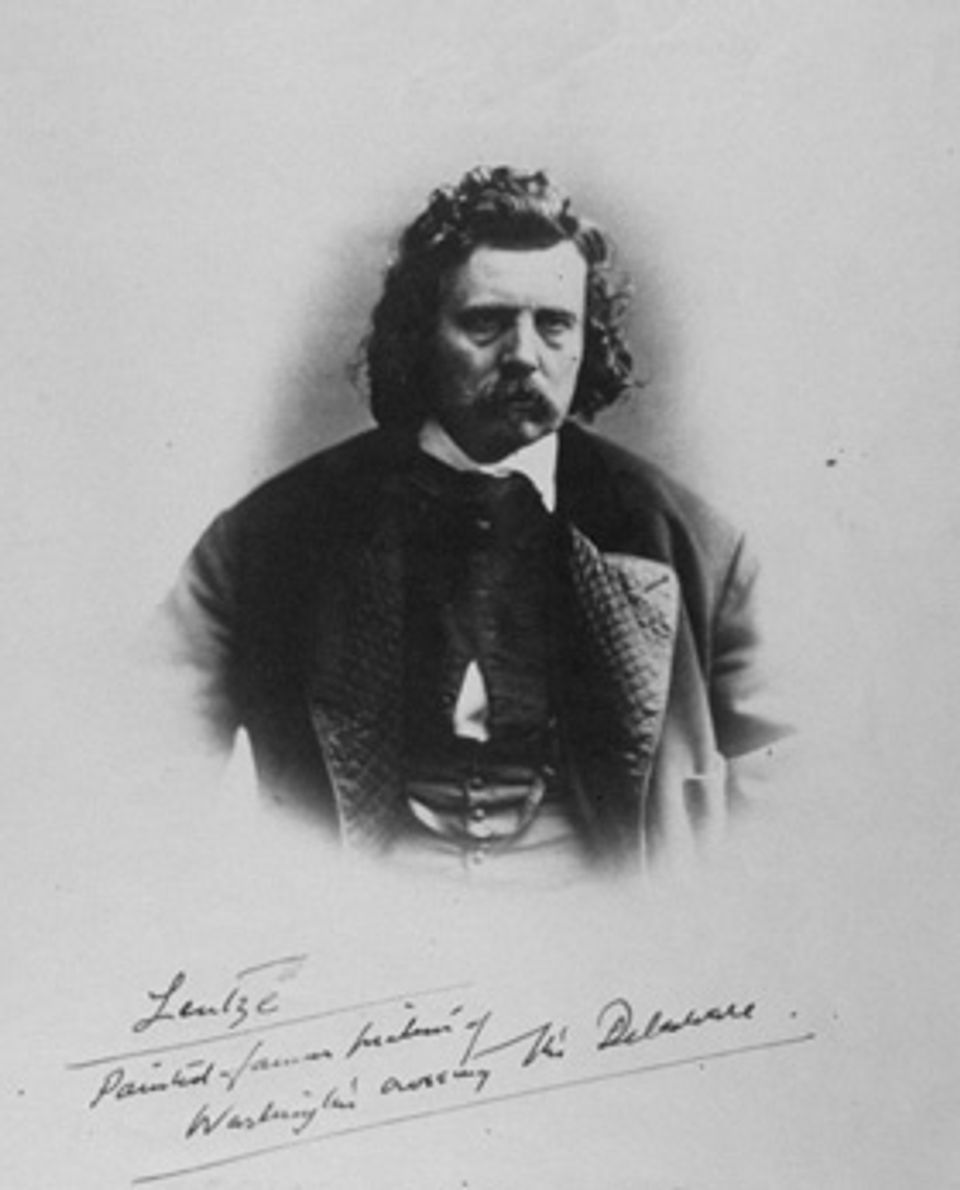Emanuel Gottlieb Leutze

- Also known as
- Emanuel Leutze
- Born
- Schwäbisch Gmünd, Germany
- Died
- Washington, District of Columbia, United States
- Active in
- Dusseldorf, Germany
- New York, New York, United States
- Philadelphia, Pennsylvania, United States
- Biography
Born in Germany, grew up in Philadelphia, studied and worked in Düsseldorf, 1840–59, before settling in the United States. Popular history painter of large, dramatic scenes such as Washington Crossing the Delaware (1851) and Westward the Course of Empire Takes Its Way (1861–1862).
Charles Sullivan, ed American Beauties: Women in Art and Literature (New York: Henry N. Abrams, Inc., in association with National Museum of American Art, 1993)
- Artist Biography
Born May 24, 1816, in Schwäbisch-Gmünd, Germany. Immigrated to Philadelphia, 1825. Studied with John Rubens Smith. In Washington, D.C., as an itinerant portraitist, 1837. In Düsseldorf, 1840–51. Studied at the Academy with Wilhelm Schadow and Karl Lessing, 1841–43. Visited Italy, 1843–45. In the U.S., 1851–52. Petitioned Congress to paint two murals. Exhibited Washington Crossing the Delaware (the second version) in the Rotunda of the Capitol, 1852. In Düsseldorf, 1852–58. Divided his time between New York and Washington, 1859–68. Painted Westward Ho!, a giant mural for the west stairwell of the House wing in the Capitol, 1861–62. In Düsseldorf, 1864. Died July 18, 1868, in Washington, D.C.
Andrew J. Cosentino and Henry H. Glassie The Capital Image: Painters in Washington, 1800–1915 (Washington, D.C.: Smithsonian Institution Press for the National Museum of American Art, 1983)
Luce Artist BiographyEmanuel Gottlieb Leutze's family were political refugees from Germany, who immigrated to America when Emanuel was nine. He began his art career as an itinerant portrait painter and miniaturist, and returned to Germany for training in Düsseldorf in 1841; during the 1840s and 1850s, he became one of the leading artists of the Düsseldorf Academy. Leutze believed passionately in America’s democratic government, and supported the German uprising of 1848 against the king. When he returned to the United States in 1859, he painted his most famous work, Washington Crossing the Delaware. In 1862 he completed his mural, Westward the Course of Empire Takes its Way, for the U.S. Capitol building. A small study for that painting is here in the Museum.













